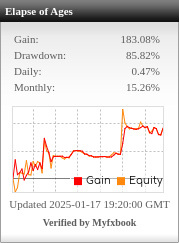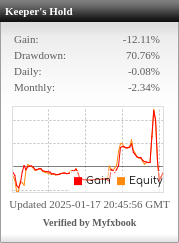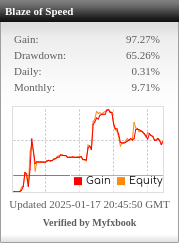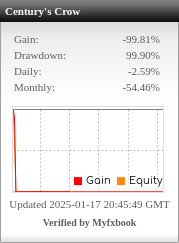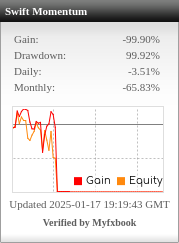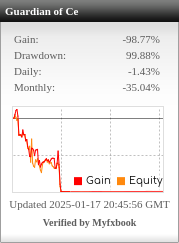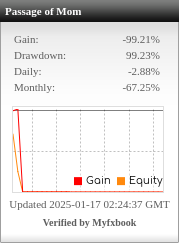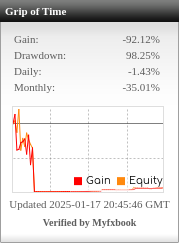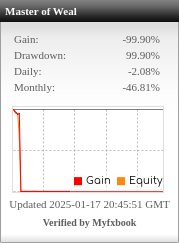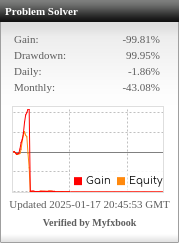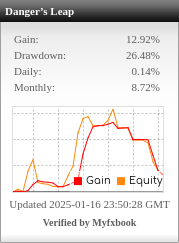Table of Contents
i just building and got some prototype but i asking u: Profit factor, Ret/DD ratio, Stability, Fitness, Open DD%, Win/Loss ratio and CAGR/Max DD%. Rank these values from most important to least important that I should consider, including the analysis of both IS and OOS at each stage.
When evaluating a trading strategy, especially in StrategyQuant X (SQX), the metrics you mentioned are all important but serve different purposes. Ranking them depends on your specific goals (e.g., minimizing risk, maximizing returns, or focusing on long-term sustainability). Here’s a ranking from most important to least important, considering both In-Sample (IS) and Out-of-Sample (OOS) stages:
1. CAGR/Max DD% (Compound Annual Growth Rate / Maximum Drawdown Ratio)
- Why It’s Important: This is a key metric for long-term growth and sustainability of the strategy. It balances how much the strategy grows versus how much it risks. A high CAGR with a low Max Drawdown ensures that the strategy is generating returns without taking excessive risk.
- IS/OOS Consideration: A good ratio in both IS and OOS suggests that the strategy is scalable and robust across different market environments.
- IS: Focus on optimizing this metric to ensure strong growth.
- OOS: Ensure consistency; a large drop in OOS could indicate overfitting.
2. Profit Factor
- Why It’s Important: Profit Factor (gross profit divided by gross loss) is essential for understanding the overall profitability of the strategy. A Profit Factor greater than 1 indicates a profitable system, with values above 1.5 or 2 being ideal.
- IS/OOS Consideration: Profit Factor must remain solid in OOS testing. If it drops significantly OOS, the strategy may be curve-fitted.
- IS: Aim for a strong value, but don’t prioritize it at the expense of risk management.
- OOS: Focus on stability and a consistent profit factor.
3. Ret/DD Ratio (Return-to-Drawdown Ratio)
- Why It’s Important: This metric balances returns against drawdowns. A high Ret/DD ratio indicates that the strategy generates good returns relative to the risk (drawdown) it takes.
- IS/OOS Consideration: It’s important in both IS and OOS stages because it ensures that your strategy’s performance isn’t reliant on taking high risks. Look for consistency across both.
- IS: Focus on maximizing returns while keeping drawdowns minimal.
- OOS: The ratio should not degrade significantly, ensuring stability.
4. Open Drawdown % (Open DD%)
- Why It’s Important: Open DD% tracks the maximum floating loss during a trade that hasn’t closed yet. This is crucial for understanding the worst-case scenarios and how your strategy behaves in adverse conditions. High Open DD% could signal that the strategy lets trades run into significant losses before closing them.
- IS/OOS Consideration: In OOS, you want to see a manageable Open DD%. A high Open DD% in OOS could indicate riskier trades.
- IS: Optimize to keep Open DD% within acceptable risk limits.
- OOS: Check if the Open DD% stays controlled in unseen data.
5. Stability
- Why It’s Important: Stability measures how consistent the equity curve is over time. A stable equity curve is essential for long-term profitability and avoiding emotional stress from sharp equity fluctuations.
- IS/OOS Consideration: Stability should be maintained across both IS and OOS phases to ensure that the strategy isn’t over-optimized to one specific market condition.
- IS: High stability is desirable, but watch out for overfitting.
- OOS: Check if stability remains intact without large drops in equity.
6. Win/Loss Ratio
- Why It’s Important: While the Win/Loss ratio is helpful, it doesn’t paint a full picture. A strategy with a lower win rate can still be profitable if the winning trades are larger than the losing ones. It’s more useful when combined with other metrics like Profit Factor or Return-to-Drawdown.
- IS/OOS Consideration: While optimizing, focus less on having a high Win/Loss ratio and more on profitability. The Win/Loss ratio may vary but shouldn’t drastically change between IS and OOS phases.
- IS: It’s fine if the Win/Loss ratio isn’t extremely high as long as the strategy is profitable.
- OOS: Ensure the ratio doesn’t drop significantly.
7. Fitness
- Why It’s Important: Fitness is an overall measure used by SQX to rank strategies based on multiple performance metrics. It’s a good indicator in the early stages of strategy generation but can be less reliable than specific metrics like CAGR/Max DD% or Profit Factor for deep analysis.
- IS/OOS Consideration: While a high fitness score is useful for identifying strong candidates in genetic evolution, don’t rely on it too heavily in OOS testing. Focus more on the other key metrics.
- IS: A high fitness score helps in the strategy-building process.
- OOS: Use other metrics to verify performance rather than fitness alone.
Stage-Specific Considerations:
In-Sample (IS) Analysis:
- In the IS phase, you are primarily focusing on optimizing your strategy.
- Prioritize CAGR/Max DD%, Profit Factor, and Ret/DD Ratio. These three metrics ensure that you have a strategy that is growing profitably with manageable risk.
- Pay attention to Stability and Open DD% next, as they will indicate how smooth your strategy’s equity curve is and whether you can tolerate the drawdowns during open trades.
- Win/Loss Ratio is less critical here, as it can be misleading if isolated from other factors. A lower Win/Loss ratio can be fine as long as the profits outweigh losses.
- Fitness is helpful early on but don’t let it overshadow more significant performance metrics.
Out-of-Sample (OOS) Analysis:
- In the OOS phase, your focus shifts to robustness and ensuring the strategy is not overfitted to past data.
- Look for consistency in CAGR/Max DD%, Profit Factor, and Ret/DD Ratio between IS and OOS. If these metrics significantly degrade, it’s a sign of overfitting.
- Stability becomes more crucial here. A strategy that maintains stability in OOS is likely to perform well in live markets.
- Open DD% should be well-managed, and ideally, it should not increase dramatically in OOS testing.
- The Win/Loss Ratio can fluctuate, but it should not collapse in OOS. Ensure that profitable trades remain larger than losing ones.
Final Ranking Summary:
- CAGR/Max DD% (Balances growth vs. risk, essential for long-term viability)
- Profit Factor (Key profitability measure)
- Ret/DD Ratio (Measures return relative to risk)
- Open DD% (Manages risk on open trades)
- Stability (Ensures a smooth equity curve)
- Win/Loss Ratio (Helpful but secondary to profitability metrics)
- Fitness (Useful early but less important for final validation)
This ranking should help guide your focus when optimizing and validating strategies in SQX. Let me know if you want to dive deeper into any specific aspect of the metrics!


